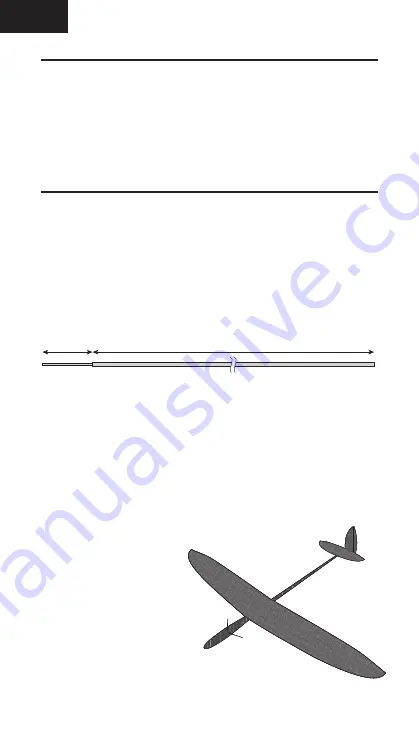
EN
4
AR8010T/AR9030T Receiver Installation
For optimum RF link performance it’s important that the antennas be mounted in
an orientation that allows for the best possible signal reception when the aircraft
is in all possible attitudes and positions. This is known as antenna polarization.
The antennas should be oriented perpendicular to each other; typically vertical
and horizontal and at different angles. The remote receiver antenna should be
mounted in a position perpendicular and at least 2 inches away from the main
receiver’s antenna using double-sided foam tape.
AR9320T Carbon Fuse Receiver Installation
Airplanes with signifi cant carbon fi ber construction can create an RF shielding
effect, reducing range. The AR9320T is designed to overcome these critical RF
issues in carbon airplanes by outfi tting the aircraft with two external antennas at
specifi c points that will ensure secure RF coverage from all angles of the aircraft.
The AR9320T incorporates two 7-inch feeder antennas, which are designed to
be easily mounted through the fuselage in carbon airplanes. Each feeder antenna
includes a coaxial portion (which can be thought of as an extension) and an
exposed 31mm tip antenna. The last 31mm is the active portion of the antenna.
Installing the Receiver
Install the receiver in the normal position recommended by the airplane’s
manufacturer. Double-sided tape or foam can be used to secure the receiver
in place.
Mounting the Antennas
To install the antennas, drill two 1/16-inch holes in the desired antenna
mounting positions.
Slide the feeder antennas through the holes until the 31mm tip, and about
2mm of coaxial, completely exit the fuselage. Use a drop of CA or tape to fi x the
antenna to the fuselage.
IMPORTANT:
Ensure that the
31mm active portion of each
antenna tip is fully exposed.
IMPORTANT:
If the antenna is
to be mounted internally (in the
front of a 2.4GHz friendly fuse),
the coaxial can be taped into
position. Ensure the 31mm tip
is located at least 2 inches from
any signifi cant carbon structure.
Check that at least one antenna
will always be in the RF visual line of sight of the transmitter (e.g. not blocked by
carbon fi ber structures) in all attitudes. This can easily be visualized by having a
178mm
31mm
External Antennas
Full Carbon


















